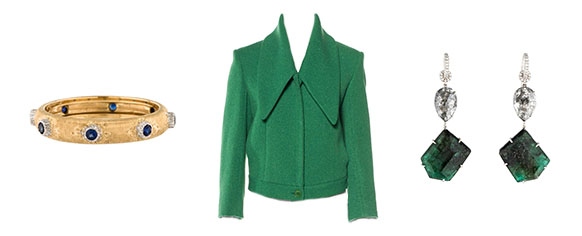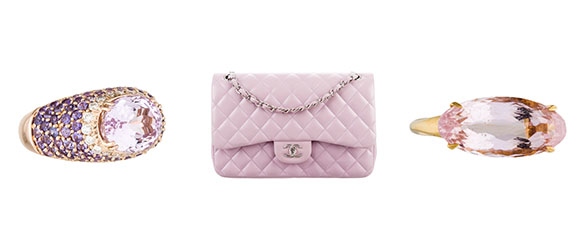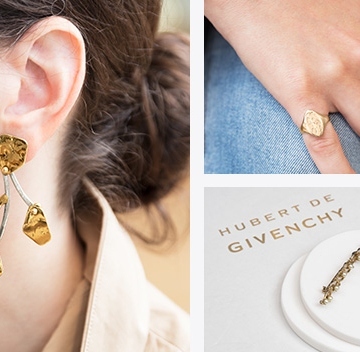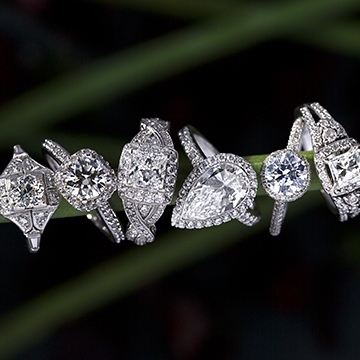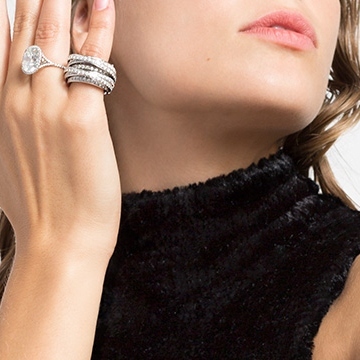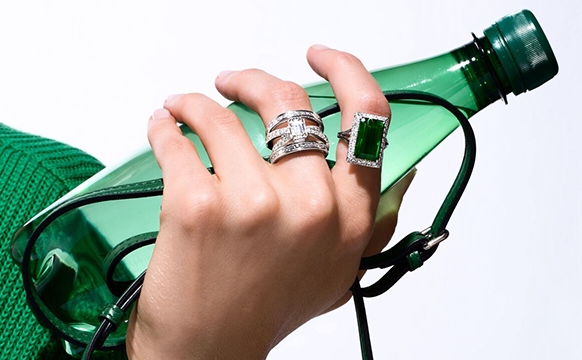
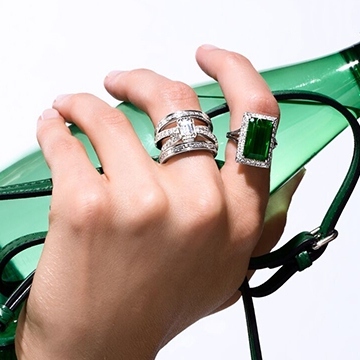
How to Buy the Perfect Colored Gemstone
Valued for their timeless elegance and versatility, diamonds have long been the designated go-to stone for engagement rings, special occasions and overall everyday polish. Equally enticing, however, is the world’s vast array of colored gemstones, and though they may not necessarily be off the radar, colored gemstones are often overshadowed by their clear counterparts.
The shine of a brilliant gemstone is something special, and the allure has been heightened by the head-to-toe tonal look that’s graced runways and captivated street style stars as of late. We won’t necessarily call it a comeback (did they go anywhere?), but we think it’s time that colored gemstones sat atop the throne of everyone’s regular jewelry rotation. For an introduction to evaluating a gemstone like a pro and how to choose the right one for you, read on for a gemological rundown from Katherine Ward, Senior Valuations Manager, Fine Jewelry & Watches.
Color Is Everything
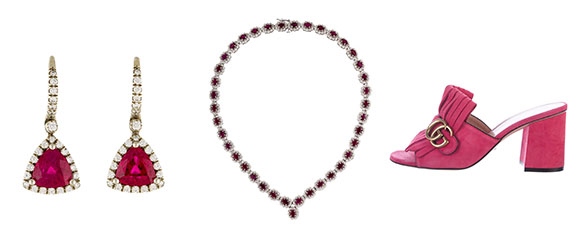
Mark Patterson 18K Ruby & Diamond Drop Earrings, $6,645; Scalloped Ruby Collar, $6,995; Gucci 2017 Marmont Slide Sandals, $675
When it comes to colored gemstones, the standards for evaluating their quality vary significantly from diamonds. While diamonds are graded by the four Cs — cut, color, clarity and carat — the technique for assessing gemstone is slightly different. “Color — defined by hue, tone, and saturation — is the key factor that gemologists use to determine value,” says Ward. “Clarity, a high priority when selecting a diamond, takes a back seat to color when considering a gemstone.”
Some stones, such as moonstone and labradorite, exhibit unusual optical effects or “phenomena” and are considered rare because of this. The bluish interior glow of moonstone is called “adularescence,” which occurs when light hits different mineral deposits within the stone. In “chatoyant” stones, a band of light or an asterisk-shaped reflection can be visible when a stone is carved into a cabochon. “Phenomenal” stones, as they’re called, are more desirable when they display prominent, distinctive phenomena.
But Clarity Matters Too
Buccellati 18K Sapphire Band Ring, $1,875; Stella McCartney Collared Wool Jacket, $250; Nina Runsdorf Diamond and Emerald Slice Drop Earrings, $5,495
Since gemstones are formed in a variety of geological conditions, each type is judged uniquely. Emeralds, for example, are formed in volatile conditions and as a result, their characteristics reveal this. “High-quality emeralds will typically have more inclusions, or impurities, than stones that grow in a more stable environment, like amethysts, which are widely available on the market ‘eye clean,’” states Ward. “Eye clean” refers to a stone without inclusions that are visible to the eye. Every gemstone’s qualities should be considered with their origin in mind, not to mention the availability of comparable material.
Beauty is always, of course, in the eye of the beholder, but sometimes a stone’s impurities are more than a superficial matter. “Inclusions tell the story of how a material was formed, or if people have altered the appearance in any way,” explains Ward. “Some inclusions are signals that a stone was created in a laboratory, or even point to a specific geographic origin.”
While The RealReal’s selection of fine jewelry goes through a rigorous authentication and identification process, it’s not always easy for a casual jewelry lover to discern certain stones from others. “As a gemologist, my task is to identify a stone based on its physical and optical properties,” notes Ward. “A lot of gemstones have doppelgangers, many of which vary wildly in value on today’s market. Because a ruby and a spinel can look very similar, a test to determine the refractive index of a stone — a measure of how it bends light — can help precisely identify a gem.”
And At The End Of The Day…
Sonia B 18K Kunzite, Sapphire & Diamond Ring, $2,695; Chanel Classic Jumbo Double Flap Bag, $4,000; H.Stern 18K Diamond & Morganite Cocktail Ring, $895


